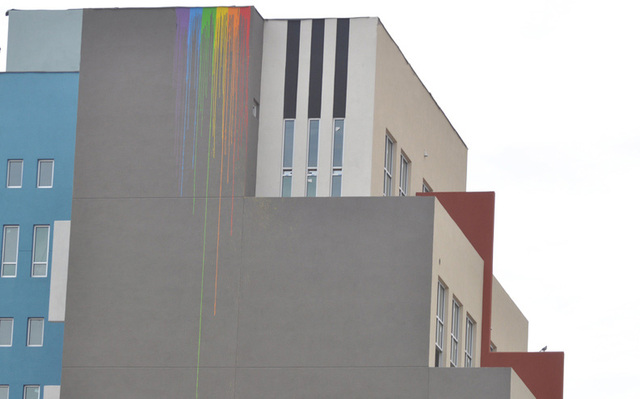Year Of The Rainbow: Art Faves For 2010
Art Faves For 2010


Chris Stain projects, then paints, a mural on an exterior wall of El Rey Theater.
John Bear

Latest Article|September 3, 2020|Free
::Making Grown Men Cry Since 1992


Chris Stain projects, then paints, a mural on an exterior wall of El Rey Theater.
John Bear



